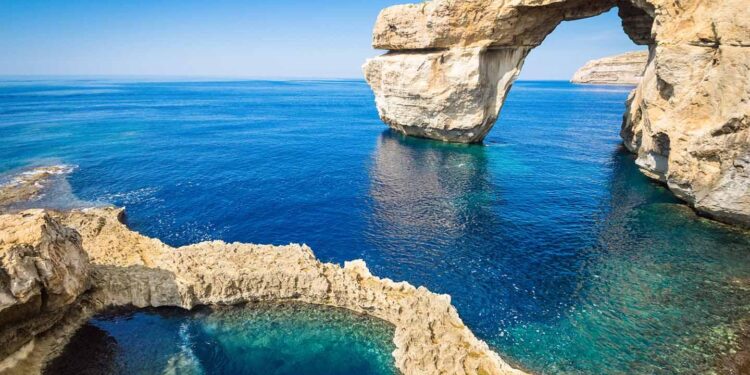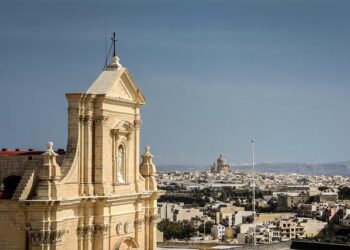Malta, a Mediterranean gem steeped in history and brimming with natural beauty, continues to captivate travelers from around the globe. From ancient fortified cities to stunning coastal landscapes, this archipelago offers a rich tapestry of experiences for every kind of visitor. In this travel guide, MSN presents the top 10 must-visit destinations in Malta, showcasing the island’s unique blend of cultural heritage, vibrant local life, and breathtaking scenery. Whether you’re seeking historical landmarks, picturesque beaches, or lively urban hubs, Malta’s diverse attractions promise an unforgettable journey.
Must-See Historical Landmarks That Define Maltese Heritage
Malta’s rich tapestry of history is vividly encapsulated in its remarkable landmarks, each narrating a chapter of the island’s storied past. From the enigmatic Ä gantija Temples on Gozo, believed to be among the oldest free-standing structures in the world, to the imposing bastions of Mdina that once served as the island’s fortified capital, these sites offer an immersive experience into Maltese heritage. Visitors also flock to the Hypogeum of Ħal-Saflieni, an underground prehistoric burial site that showcases the island’s profound ancient spirituality and architectural ingenuity.
Beyond these iconic locations, Malta boasts a variety of other historical marvels such as the majestic St. John’s Co-Cathedral in Valletta, adorned with exquisite Baroque art, and the rugged yet awe-inspiring cliffs of Dingli, which stand testament to the island’s natural defenses throughout the ages. A quick glance at the table below highlights some key must-visit landmarks and their historical significance:
| Landmark | Era | Key Features |
|---|---|---|
| Ä gantija Temples | Neolithic (3600-3200 BC) | World’s oldest freestanding temples |
| Mdina Walls | Medieval Period | Fortified medieval city with bastions |
| Hypogeum of Ħal-Saflieni | Prehistoric (4000 BC) | Underground burial complex |
| St. John’s Co-Cathedral | 17th Century | Baroque art and exquisite interiors |
| Dingli Cliffs | Natural Defense | High sea cliffs with historical watch posts |
Insider Tips for Exploring Malta’s Breathtaking Coastal Towns
When venturing through Malta’s scenic coastal towns, timing is everything. Aim to explore early mornings or late afternoons when the golden light casts a magical glow on the limestone facades, and the crowds are noticeably thinner. Avoid the peak summer months if you prefer a more tranquil atmosphere, as July and August tend to be bustling with tourists. For authentic local flavor, visit the markets and seaside cafĂ©s, where you can sample freshly caught seafood and traditional Maltese street food like pastizzi without the typical tourist markup. Don’t hesitate to take narrow alleys off the main promenade – these hidden streets often reveal charming boutiques, artisanal workshops, and vibrant street art that many travelers overlook.
Transportation between towns can greatly enhance your experience. While Malta is compact, using the ferry services between towns such as Marsaxlokk and Valletta not only saves time but also provides stunning coastal vistas from the water. Renting a bicycle or scooter offers flexibility, especially in towns like Mdina and Senglea where parking is limited. For those eager to dive deeper into Malta’s maritime history, guided boat tours offer exclusive access to sea caves and remote beaches unreachable by land. Keep a lookout for the traditional Maltese luzzu boats-their vivid colors and eye motifs make for perfect photo opportunities and a glimpse into the island’s fishing heritage.
Where to Savor Authentic Maltese Cuisine and Nightlife Experiences
Malta offers a rich tapestry of flavors deeply rooted in Mediterranean tradition. To truly indulge in authentic Maltese cuisine, make your way to Marsaxlokk fish market, where freshly caught seafood transforms into mouthwatering dishes like lampuki pie and fenek (rabbit stew). Head over to local family-run trattorias scattered throughout Mdina and Valletta to sample hearty plates of bragioli (beef olives) paired with traditional ftira bread. For a more contemporary setting, the bustling streets of Sliema offer trendy bistros serving up Maltese delicacies with a modern twist, perfect for food lovers eager to explore innovative culinary interpretations.
When the sun sets, the island springs to life with vibrant nightlife experiences that cater to all tastes. Whether you prefer sophisticated wine bars in St. Julian’s or energetic clubs in Paceville, Malta’s nightlife doesn’t disappoint. Visit stylish rooftop lounges where DJs spin eclectic beats against panoramic views of the Mediterranean, or opt for cozy pubs offering live local music and craft beers. For those seeking a blend of culture and entertainment, outdoor festivals and street parties provide immersive settings to enjoy Maltese hospitality after dark.
| Spot | Highlight | Best Time to Visit |
|---|---|---|
| Marsaxlokk | Fresh Seafood Market & Seaside Dining | Sunday Morning |
| Mdina | Historic Taverns & Traditional Maltese Dishes | Evening |
| St. Julian’s | Rooftop Bars & Nightclubs | Night |
| Paceville | Vibrant Nightlife Hub | Late Night |
Wrapping Up
Malta’s rich history, stunning landscapes, and vibrant culture make it a must-visit destination for travelers seeking both adventure and relaxation. From the ancient streets of Valletta to the pristine beaches of Gozo, these top 10 places showcase the island nation’s unique charm and diverse attractions. Whether you are a history enthusiast, nature lover, or simply in search of a Mediterranean getaway, Malta offers something for everyone. As travel continues to reopen globally, now is an ideal time to explore the best of what this island has to offer. Stay tuned to MSN for more travel insights and destination guides.
















